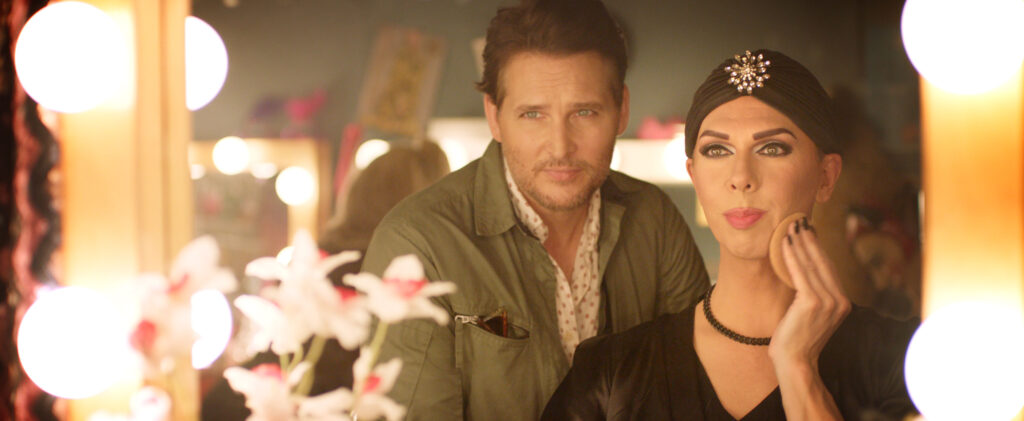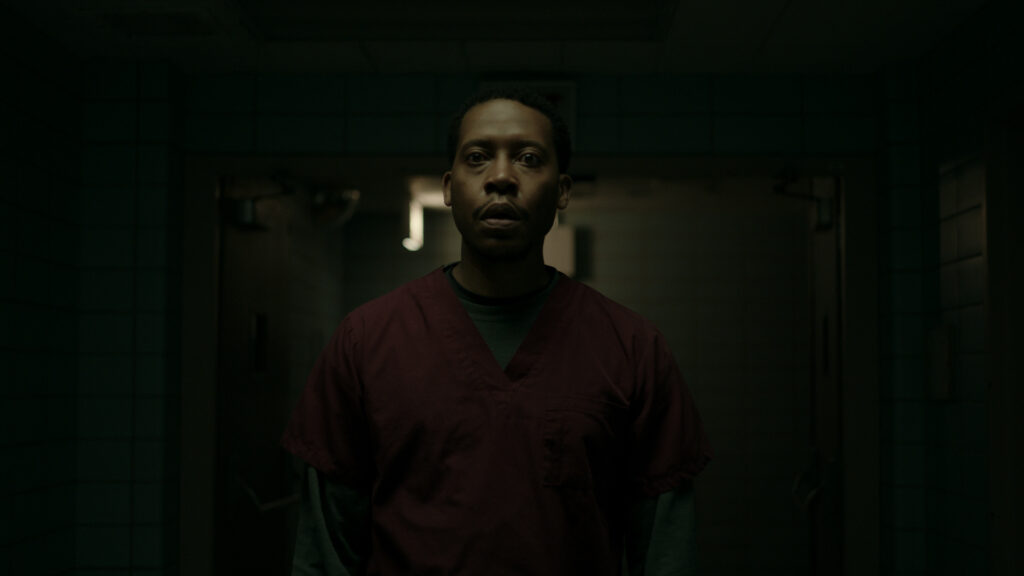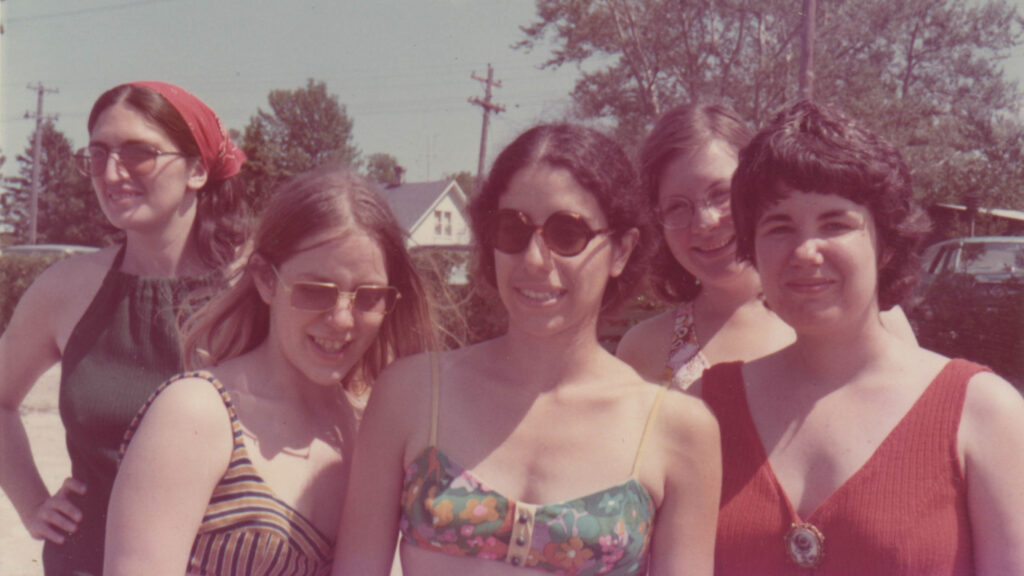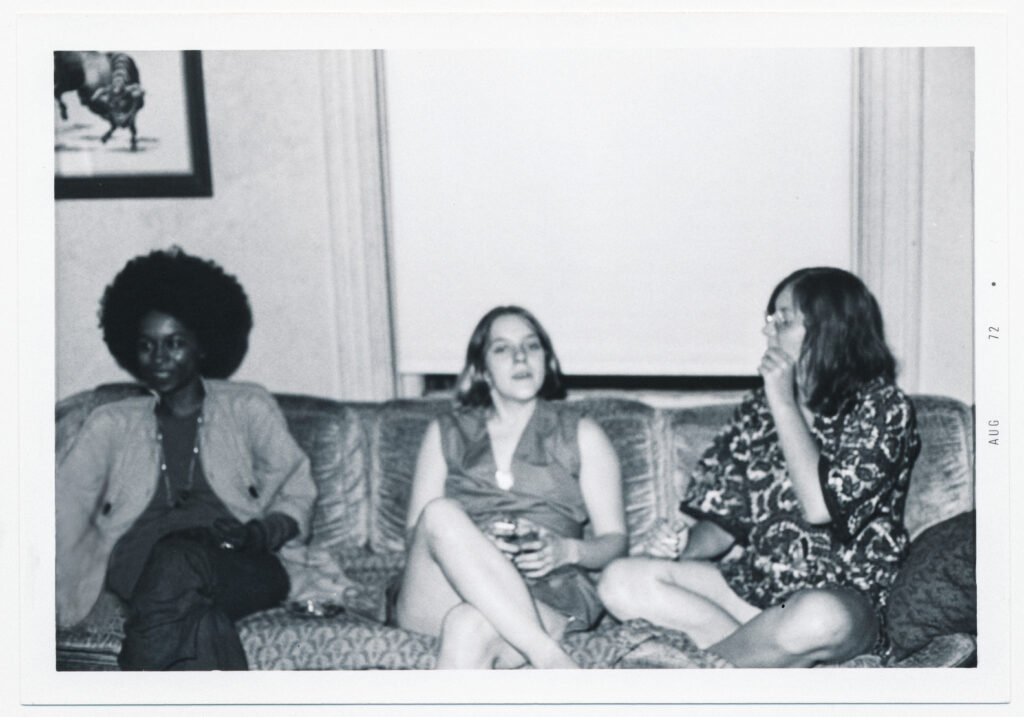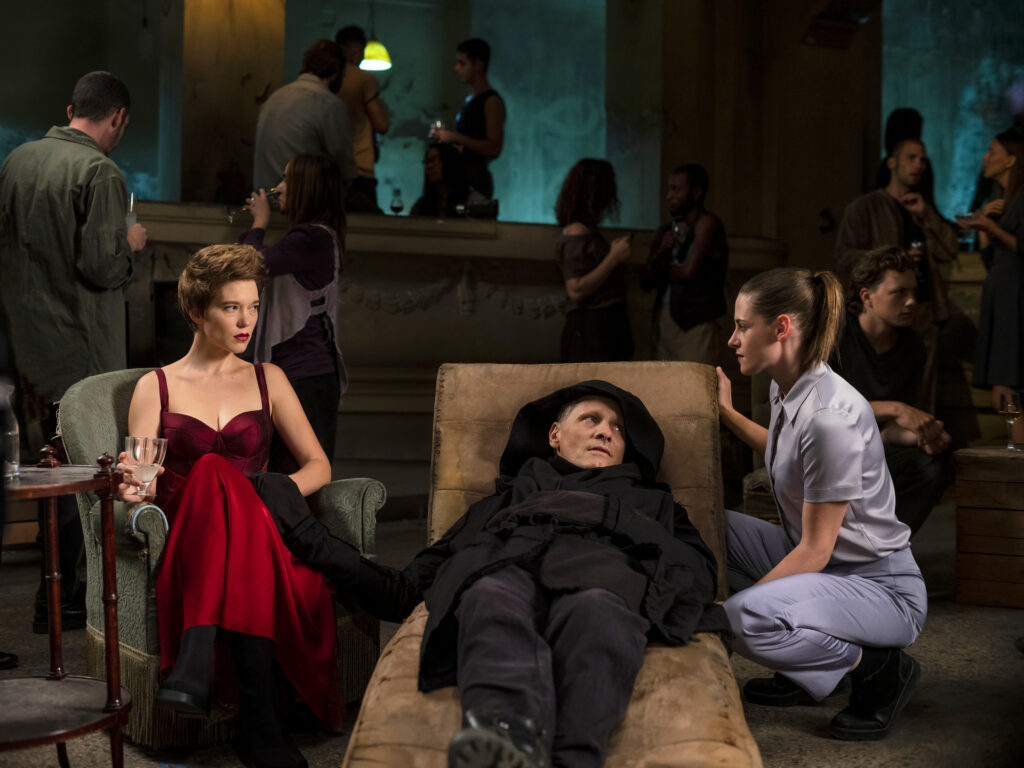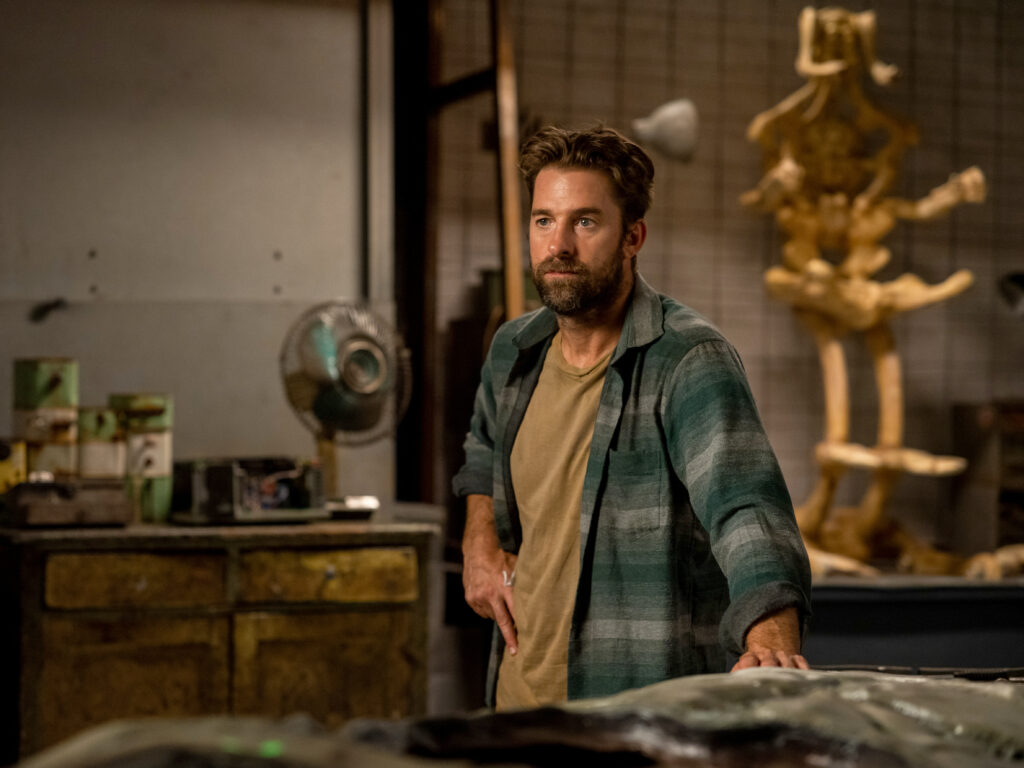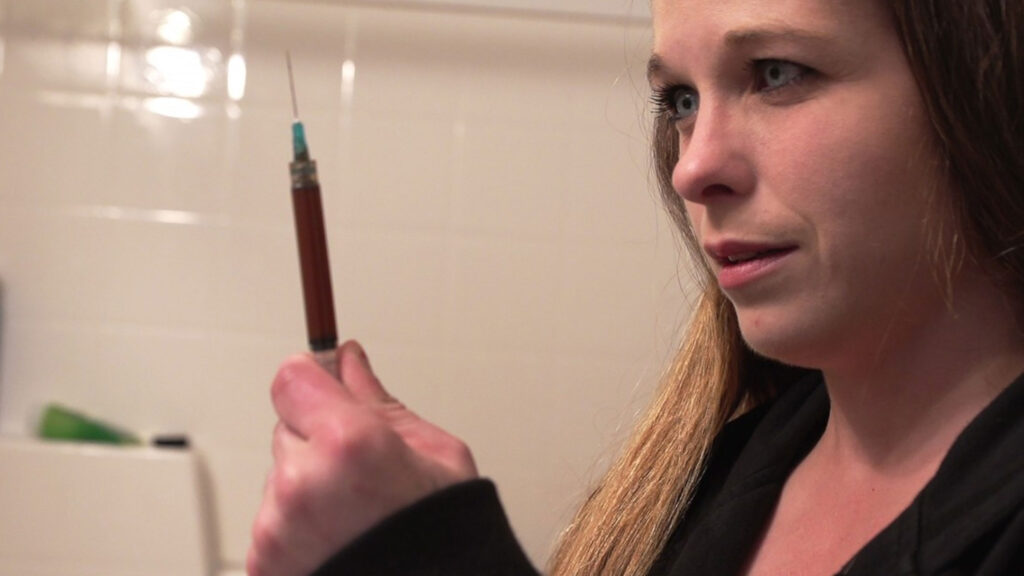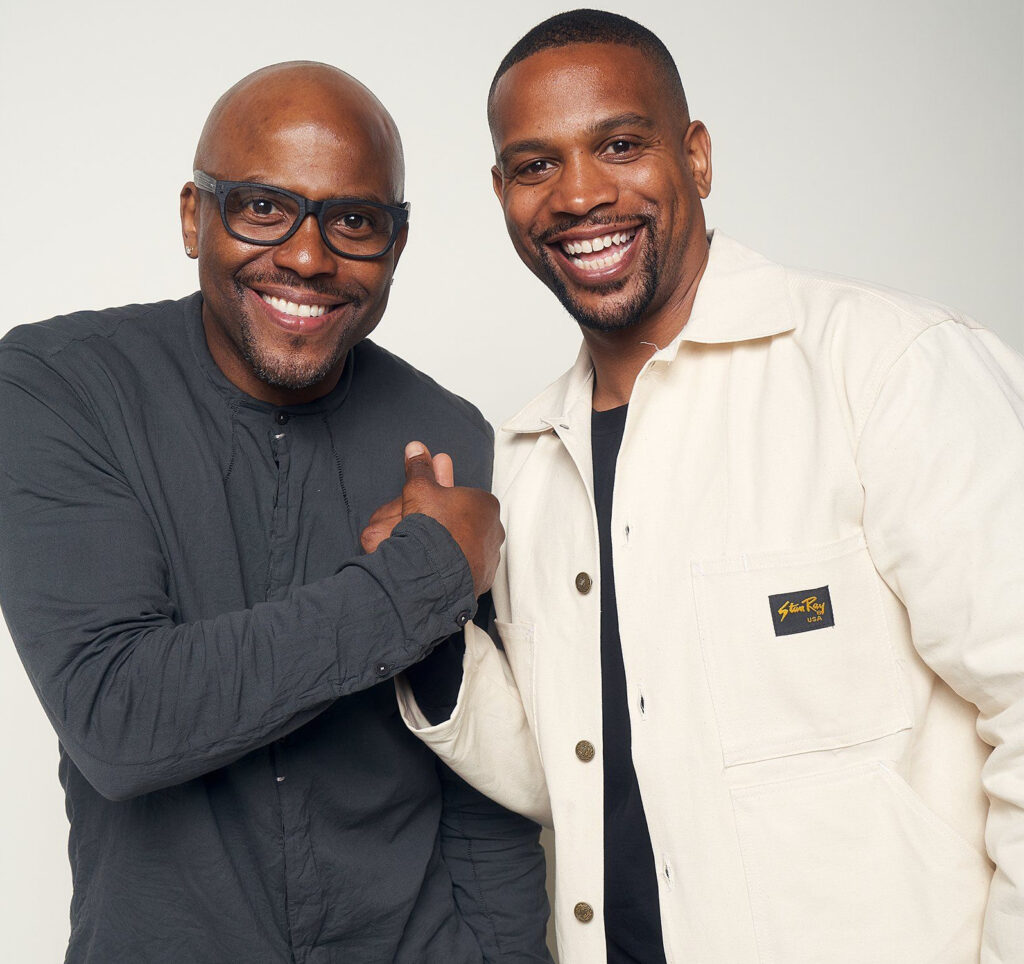June 12, 2022
by Carla Hay

“Good Luck to You, Leo Grande”
Directed by Sophie Hyde
Culture Representation: Taking place in an unnamed city in England, the comedy/drama film “Good Luck to You, Leo Grande” features a small number of cast of characters (a few white people, one biracial person and one Asian person) representing the working-class and the middle-class.
Culture Clash: A repressed, middle-aged widow hires a gigolo to help her get in touch with her sexuality, and they have debates and other discussions about sexual confidence, relationships and his escort work.
Culture Audience: “Good Luck to You, Leo Grande” will appeal primarily to people interested in well-acted movies that explore issues about how middle-aged women are often viewed by society and by themselves when it comes to sexuality and being “lovable.”
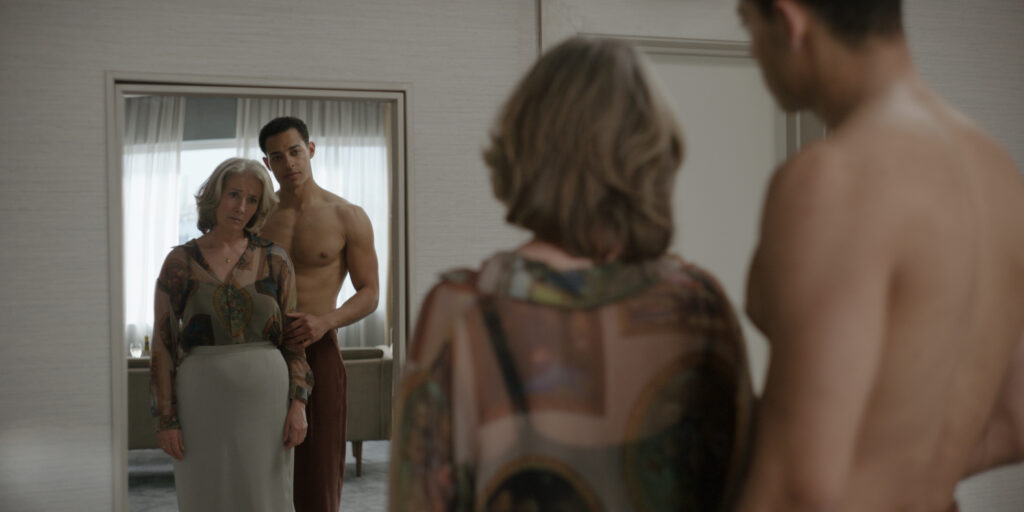
The title of “Good Luck to You, Leo Grande” has the name of the gigolo in this comedy/drama, but the movie’s more fascinating story arc is with Nancy Stokes, the woman who hires Leo. Emma Thompson, who plays Nancy in the movie, gives a stellar performance in this conversation-driven film that has authentic, poignant and sometimes hilarious depictions of sexuality, sex work and the need for human beings to connect with each other in a meaningful way. “Good Luck to You, Leo Grande” had its world premiere at the 2022 Sundance Film Festival.
Directed by Sophie Hyde and written by Katy Brand, “Good Luck to You, Leo Grande” has a very small number of people in its cast, with two characters (Nancy and Leo) getting the vast majority of screen time. That’s because almost all of the scenes in the movie take place at in a room at the Duffield Hotel, where Nancy and Leo meet for their trysts. “Good Luck to You, Leo Grande” takes place in an unnamed city in England, but the movie was actually filmed in Norwich, England. It would be easy to assume from the way that the movie is structured that it was adapted from a stage production, but Brand’s “Good Luck to You, Leo Grande” is an original screenplay.
“Good Luck to You, Leo Grande” doesn’t waste any time in getting directly to the reason why Nancy and Leo have met. The first scene shows Nancy meeting Leo (played by Daryl McCormack) in the hotel room that she has rented for their first sexual encounter. Nancy is a 55-year-old widow and retired schoolteacher who used to work at a religious school for teenage girls. It will be the first time she has been with a sex worker and the first time she’s had sex with someone other than her husband.
Nancy has hired Leo because, as she tells him, Nancy and her late husband, whom she was married to for 31 years, had a boring sex life. Nancy also tells Leo that sex with her husband was so dull and predictable, he always wanted to have sex quickly and in one position. Nancy confesses to Leo that she’s never had an orgasm and has never had oral sex (because her husband refused to give or receive oral sex), so she wants to know what she’s been missing out on for all these years.
Leo is about 25 to 30 years younger than Nancy, who found Leo on a website where he advertises his services as a sex worker. In their first meeting together, Nancy is very nervous, while Leo is very confident. Leo asks Nancy if he can kiss her on the cheek, and she hesitantly obliges. He compliments her by telling her that the Chanel perfume that she’s wearing is sexy. She adds sarcastically, “For my age.” Leo clarifies, “At any age.”
Much of the movie is about insecure Nancy questioning how sexually attractive she is because of her age, her physical appearance, or lack of experience in having orgasms and trying new things sexually. She often makes self-deprecating remarks in a comedically sarcastic way, but always with an underlying sense of emotional pain. When Nancy and Leo first see each other, one of the first things she says to him is: “Am I a disappointment, so to speak?” Leo’s response is to gently kiss her.
Nancy is not digging for compliments. Nancy has been sexually repressed for years, so it’s affected her self-esteem. She knows it, and she’s ashamed of it. She tells Leo, “I made a decision after my husband died not to fake another orgasm again.” In an example of one of her self-deprecating comments, Nancy later jokes to Leo: “There are nuns with more sexual experience than me. It’s embarrassing.”
Leo deliberately doesn’t reveal much about himself to Nancy, which he says is a policy that he has for all of his clients. During the first meeting between Leo and Nancy, he says he’s originally from Ireland (which is obvious because he has an Irish accent) and that he’s been an escort for a while, without going into detail about exactly how many years he’s been in this line of work. At various times, Nancy tries to get Leo to talk more about himself, but Leo artfully dodges her questions or outright refuses to answer.
However, Leo is quick to tell Nancy that he’s not a desperate or unhappy sex worker. He says he’s willingly doing this work, and it makes him happy to give pleasure to the people who hire him. Leo also says that he has men and women for clients. Nancy doesn’t seem to mind what Leo’s sexual identity is, or the fact that he’s biracial. (Leo appears to be half-black and half-white.) This open-mindedness is an early indication that Nancy isn’t as uptight as she might first appear to be.
Nancy tells Leo in their first meeting, “I’ve never bought anyone before.” Leo gently corrects her: “You didn’t buy me. You bought my services. I’m not being exploited.” Nancy has told Leo up front that she will only meet him for secret encounters in this hotel. She doesn’t want to be seen in public on a “date” with him. Nancy doesn’t want to take the chance that anyone she knows might see her and Leo together, because Nancy doesn’t want to have to lie about or explain to anyone how she knows Leo.
Nancy is still very jittery during this first meeting, so she and Leo have some wine to help her relax. When she tries to get him to talk about himself, so that she can get to know him better, Leo skillfully steers the conversation back to talking about Nancy. A typical response that he gives to avoid answering a personal question is: “I’m whatever you want me to be, here in this moment.”
At times, Nancy seems eager to have sex, by saying, “Let’s get the sex over with.” But when Leo guides her to the hotel bed, Nancy stalls and says, “It feels controversial.” Even when she changes into lingerie, Nancy is still visibly uncomfortable. Nancy wants to talk some more before anything sexual happens between her and Leo.
During this conversation, Nancy demands to know the age of the oldest client Leo has ever had. He tells her 82. She seems relieved to know she’s not the oldest one. Nancy also wants Leo to tell her what he thinks is physically attractive about her. He tells her, “I like your mouth,” which he touches seductively.
Nancy still has a hard time relaxing, so she talks a little bit more about her personal life. She reveals to Leo that she has two adult, unmarried children: a son named Matthew and a daughter named Pamela. Nancy says that she has a better relationship with Matthew than she does with Pamela.
Nancy describes Matthew as “boring.” He has girlfriend who’s studying to be a primary schoolteacher, which Nancy also describes as “boring.” A psychiatrist might have a field day speculating over why Matthew has a girlfriend and a mother who’ve gone into the profession of being schoolteachers, and why Nancy doesn’t seem to approve of this girlfriend’s career choice.
Pamela is described as living a bohemian life in Barcelona, Spain. According to Nancy, she and Pamela don’t have a very good relationship with each other because Pamela thinks Nancy is “cold.” It’s obvious from the way that Nancy talks about her children, she rarely sees them and isn’t very close to them emotionally.
Slowly but surely, Leo reveals a little bit more about his personal life. He mentions that his single mother doesn’t know that he’s a sex worker. Leo has lied to his mother by telling her that he works at an oil rig. It’s still not enough information for Nancy, who keeps wanting to know more about Leo, especially after they meet for more than one tryst.
Nancy and Leo end up having sex during their first meeting, which is not spoiler information because the entire movie is about what Nancy hired Leo to do and how it affects both of them. (The sex scenes in movie, which has full-frontal nudity, are not pornographic, but they’re very explicit.) Over time, Nancy becomes emotionally attached to Leo. And at times, she gets a little jealous or possessive about him. Nancy wonders how much Leo might have feelings for his other clients.
Leo can see that Nancy is starting to develop romantic feelings for him, so he resists in a way that won’t offend her. “Good Luck to You, Leo Grande” realistically shows the balancing act that sex workers have to do when they know that a client might fall in love, but the sex worker has to keep a professional distance while trying not to alienate someone who could be a loyal customer.
Nancy reminds Leo that she’s not a rich woman, and she’s spending a lot of her retirement money on him. It’s a somewhat manipulative way to try to get Leo to open up to her, but he doesn’t really take the bait. And why should he? No one is forcing Nancy to hire a sex worker. No one is telling her how she should spend her money.
Nancy also tries to endear herself to Leo by telling him that she can recommend him to female friends of hers who are also single and looking for sexual satisfaction. It’s another manipulation, because observant viewers can see that Nancy doesn’t really like knowing that Leo has other clients. Nancy knows that what she and Leo have isn’t love, but it seems like she has somewhat of a fantasy that she could be Leo’s favorite client because of the way that she has opened up emotionally to him.
One of the best things about “Good Luck to You, Leo Grande” is how it candidly depicts the complications that can happen between a sex worker and a client when emotions get involved. The movie presents these complications in a way that’s very mature and completely believable. “Good Luck to You, Leo Grande” also shows how confusion and resentment can arise when a client starts to wonder how genuine a sex worker’s compliments are when the sex worker is essentially being paid to give compliments to the client.
Thompson has the more intricate role to play in the movie, which she handles with great skill and nuance. However, McCormack holds his own very well as the deliberately mysterious Leo, who seems to know how to say all the right things to a client, but Leo gets uncomfortable when it comes to saying things about himself. Fortunately, the last third of the movie gives more depth to Leo than being a sex worker who avoids answering personal questions.
Because “Good Luck to You, Leo Grande” takes place mainly in a hotel room, the movie might disappoint some viewers who are expecting more action outside of this hotel room. However, the last third of the movie does have a few scenes outside the hotel that offer a glimpse into what Nancy is like in another environment. These scenes also demonstrate how she might have changed because of her relationship with Leo.
There’s a very illuminating scene where Nancy has an unexpected encounter in a restaurant with a woman in her 20s named Becky (played by Isabella Laughland), who is a former student of Nancy’s and who now works as a server at the restauarant. Becky’s encounter with Nancy gives viewers a perspective of how Nancy was as a teacher. This scene is a way of showing how Nancy’s sexual repression affected other areas of Nancy’s life.
There have been many scripted movies about sex workers and their clients, but if they’re told from the clients’ perspectives, these clients are usually men. “Good Luck to You, Leo Grande” is a rare movie that honestly depicts what it’s like for a middle-aged woman to reclaim and explore her sexuality by hiring a sex worker. It’s not trying to sell a gigolo fantasy, because the movie shows the pitfalls of ignoring the realities of sex work. “Good Luck to You, Leo Grande” is ultimately an impressive story about a woman who hired a sex worker for one thing, and she ended up getting more than she expected.
Hulu will premiere “Good Luck to You, Leo Grande” on June 17, 2022.


